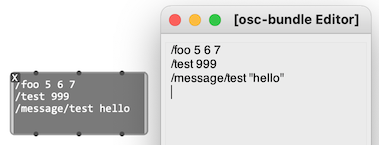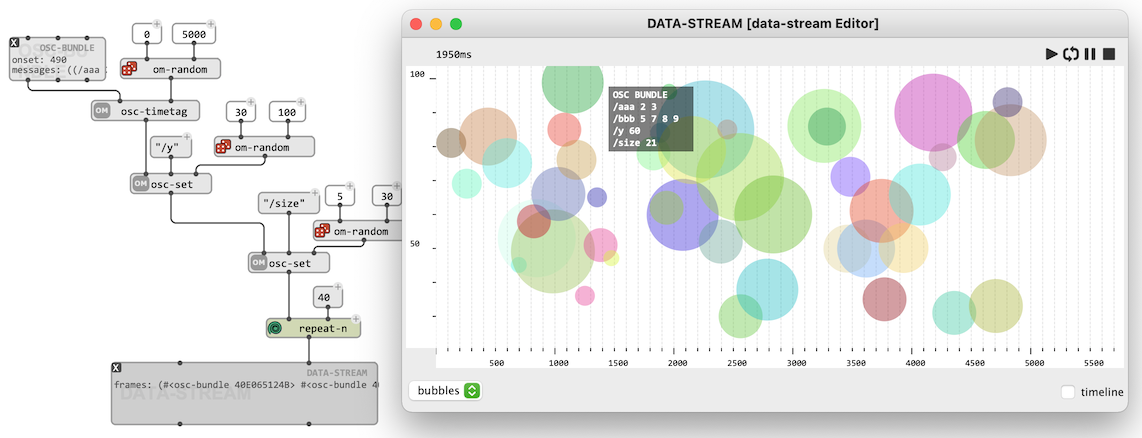OM# Documentation
OSC Messages and Bundles
An OSC message consists of an OSC “Address Pattern” followed by an by zero or more OSC “Arguments”.
What follows is a simplified description of OSC features and specification, corresponding to the minimum required to work with OSC in OM#. For a more detailed description, see https://opensoundcontrol.stanford.edu/spec-1_0.html.
OSC address patterns
The address pattern is a simple string following the syntax of URLs, begining with “/”, usually describing a given parameter.
For intance: "/synth/parameters/frequency".
OSC arguments
OSC arguments can be integers, float numbers, strings. Some OSC implementations support additional types.
→ The function
osc-msgis a simple utility to format OSC messages in OM#; but the messages can also be created and processed as plain Lisp lists:("/synth/parameters/frequency" 440.0)
OSC-BUNDLE
The OSC-BUNDLE object represents a set of OSC messages (optionally assigned to a give date). This structure reflects the notion of bundle in OSC specifications, and is encoded as an OSC bundle with the corresponding “time-tag” when sent over the network.
Manipulating and processing OSC bundles
OSC-BUNDLE can be processed through OM# visual programs thanks to a number of utilities (see osc-get, osc-set, osc-delete, …) or directly by maniuplating the list of OSC messages as a list of lists – each message is a list (address value(s)).

A simple editor (accessible by doublick on the OSC-BUNDLE box) allows editing the contents of the message list directly as text.

A DATA-FRAME
OSC-BUNDLE is a special type (sub-class) of DATA-FRAME. The date attribute (milliseconds) can be set to construct temporal sequences of OSC messages and embedded in containers such as DATA-TRACK.
OSC-BUNDLEhas some specific properties set with theDATA-TRACKeditor. The bundle display can be controlled with messages such as"/size","/y","/color".

When played in such time-sequences, the action of an OSC-BUNDLE is a call to send-osc, which sends the contents of the OSC bundle out through the network.